by Ocean Robbins: If you’re a Game of Thrones fan, you’re familiar with the motto of House Stark: “Winter is Coming…”
We are proud to announce a new partnership with John and Ocean Robbins and the Food Revolution to bring our readers Summits, Seminars and Masterclasses on health, nutrition and Earth-Conscious living.
Sign Up Today For the Brain Breakthroughs Masterclass
In the context of that fantasy world, it means that life is about to get cold, hard, and mean.
In my house, the phrase has a totally different meaning. While we’ll miss ripe berries and freshly shucked corn for a few months, we start looking forward to consuming the crops that are harvested in late fall and beyond. Although many fruits and vegetables stop growing when it gets colder, winter is a prime season for many root veggies, greens, and legumes.
Some thrive in cooler air and soil, and actually taste better when harvested in winter. Others, harvested earlier, store well in the cooler months and can last well throughout the winter and into early spring.
Also, eating seasonally can help you get in touch with the natural world, which is important when so many of us spend our days and nights in climate-controlled, human-made environments that attempt to be unaffected by nature’s cycles. Not only that: Eating local foods in season can be good for you and the environment.
So what are some of the best winter vegetables to add to your diet? What are their benefits? And how can you prepare them for ease and deliciousness?
Winter Vegetable Benefits & Best Qualities
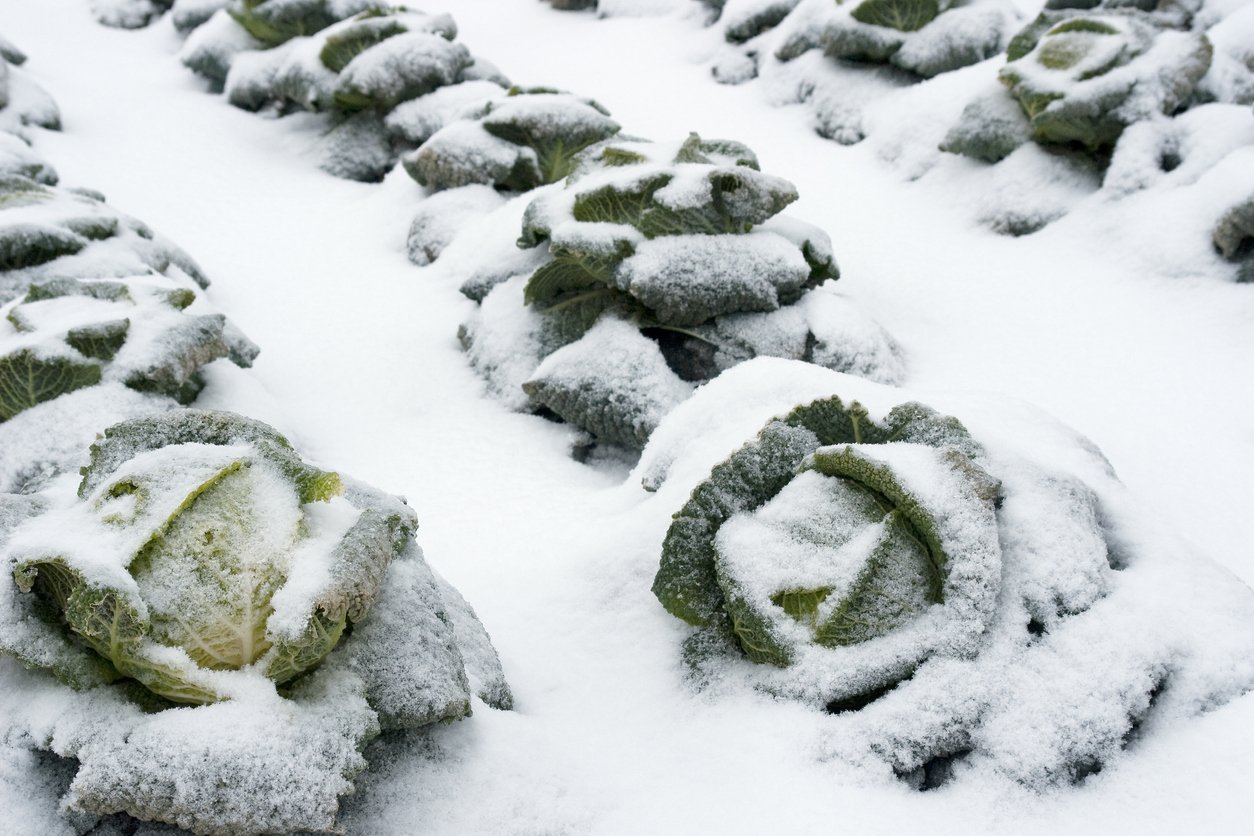
Most things slow down in the cold. Winter veggies keep for a long time in storage (think piles of potatoes and turnips in root cellars). Many can be preserved through processes like pickling, lacto-fermenting, dehydrating, or freezing. Some root veggies can even be stored in the soil where they grow — the sweetest carrots and parsnips you’ll ever taste might have been pulled out of frozen ground.
Other veggies thrive in the frigid air even without the benefit of being tucked in all snug under the soil. And some varieties of leafy greens, broccoli, Brussels sprouts, and turnip greens can survive in medium to heavy frost temperatures and be ready for harvest during the winter months. Kale and collard greens are the chilly cruciferous champions, staying viable down to 20 degrees F. And they don’t need mittens or balaclavas (though they’d sure be cute)!
Winter veggies are a versatile bunch — you can use them in a variety of ways and feature them in all sorts of recipes. They’re also nutrient-dense. Roots serve to sustain the plant for long periods of time when photosynthesis is offline, and they sustain the animals and humans who eat them in a similar fashion.
Since winter veggies can be harvested over a wide time frame, it may be possible to pick them on a just-in-time basis, which optimizes their nutrient profile. And like pretty much all vegetables, the winter ones are, in general, good for you, and the more of them you include in your diet, the better. And in a society in which so few people consume enough fruits and vegetables, the winter ones can help provide critical nutrients, including that all-important fiber.
Why Eat Winter Crops in Season?

The whole idea of “eating out of season” would be a pretty wild concept to any human who lived more than 150 years ago. With the exception of spices and certain foods preserved through dehydration, fermentation, or freezing in ice houses, eating locally and in season was pretty much the only option.
It’s only through technology and global trade that it’s become possible to eat foods that weren’t grown within a few hundred miles of where you live. If you like tomatoes in January in New Hampshire, or guavas in August in Cape Town, you can get them thanks to an incredible network consisting of logistics, transportation, preservation, storage, marketing, and supply chain management (plus a growing number of greenhouses). But long-distance schlepping frequently necessitates compromises when it comes to flavor, freshness, and nutritional value.
In general, locally grown food contains more nutrients since it tends to be fresher, and therefore it’s healthier for you. It’s also better for the environment since it doesn’t require the burning of fossil fuels to get it from Point A to Point B.
Eating locally also supports local farmers, which provides a measure of resilience against the kinds of supply chain problems we’ve seen during the pandemic. And if you are your own local farmer (or gardener), you can save money by eating from your own patch of soil. That’s as true for winter crops as it is for spring and fall crops.
If you want to grow your own winter vegetables, many resources can help you get started, from YouTube gardening channels, to your local agricultural extension agent or master gardener, to books like The Year-Round Vegetable Gardener and The Winter Harvest Handbook.
And since eating locally whenever possible imposes a voluntary constraint on your consumption, you have a chance to get creative with new foods and recipes.
Winter Crops List
Depending on your climate, not all of these vegetables will grow and be available during the winter where you live. Often there are specific regional winter varieties. But this is a basic list of winter vegetables you may find at markets, CSAs, farm stands, and grocery stores.
- Winter Squash
- Carrots
- Lettuce
- Winter Cabbage
- Peas
- Dark Leafy Greens
- Brussels Sprouts
- Potatoes
- Alliums
- Beets
- Turnips Broccoli
Ways to Prepare Winter Vegetables & Best Enjoy Them
Winter Squash
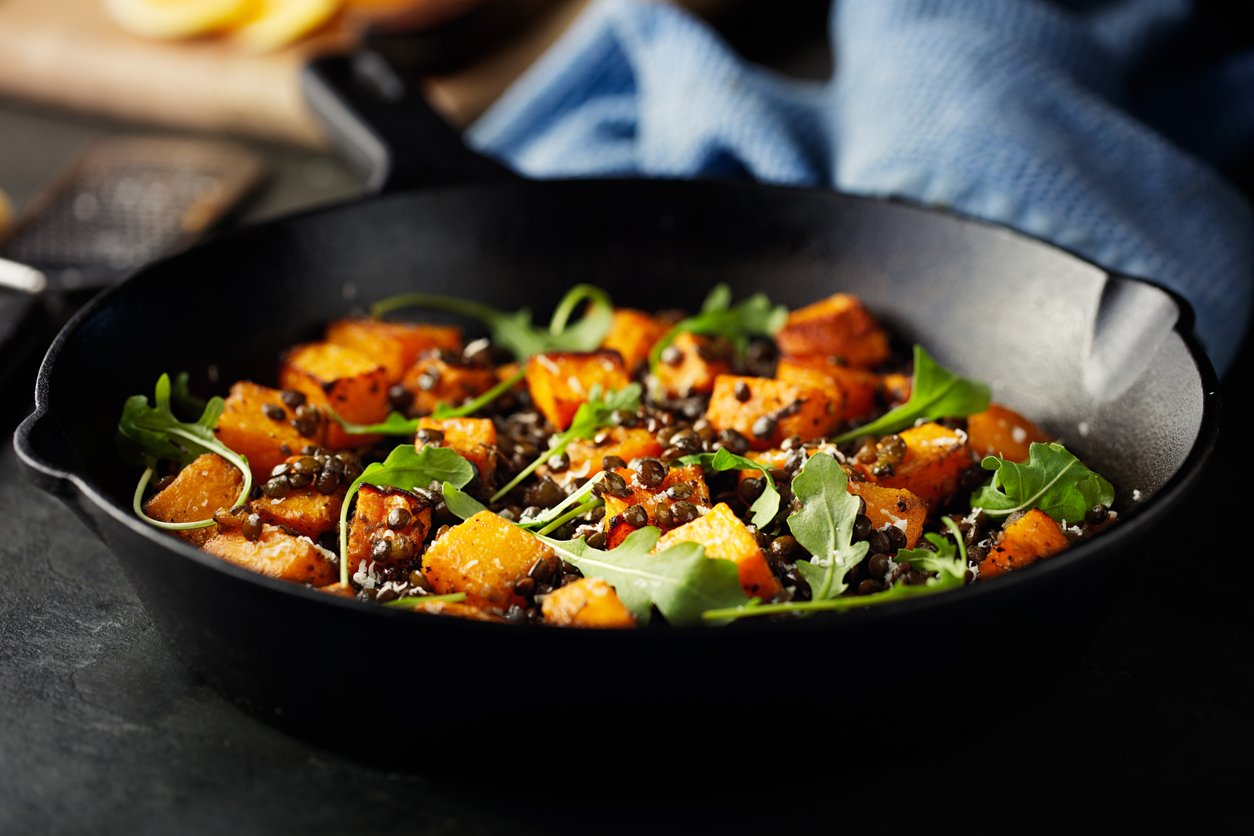
Winter Squash has winter right there in the name! Full of nutritional benefits and also wildly tasty, this family of what are technically fruits (with seeds inside) can last a long time, and even manage to be adorably decorative while doing so. Butternut squash, acorn squash, pumpkins, and dozens of other varieties will keep for months (as long as you can resist carving faces into them), and lend their wonderfully organic textures and colors to your pantry, sideboard, or dining table centerpieces.
Plus, they’re ridiculously good for you. They are rich sources of A, C, and B vitamins, high in antioxidants, and provide crucial minerals such as potassium, magnesium, and manganese. If you’re into cardiovascular and metabolic health, winter squash make powerful dietary allies. They’re also good for the health and radiance of your hair and skin, and contribute nutrients that support vision, as well.
Your average butternut or acorn squash will live happily (I assume) on a kitchen counter for up to three months, and twice that (or more) in a cool environment such as a cellar.
You can use winter squash as a base for soups and stews, bake or roast them for a side dish, enjoy them stuffed as a main dish, and even cooked and blended into sauces or toppings for pasta and grain dishes.
Carrots
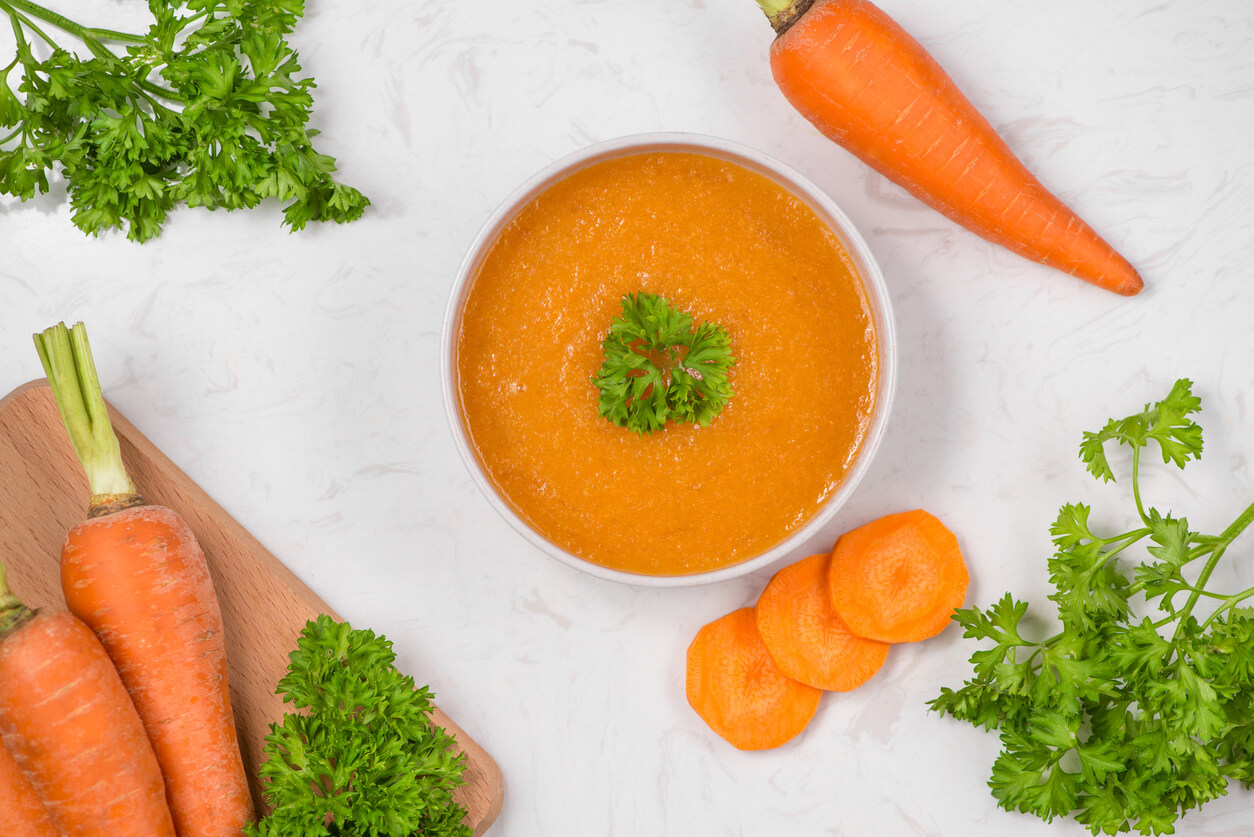
Carrots are perhaps the best-known of all winter produce. As long as they’re kept from freezing in the ground, they just get sweeter as the temperature drops. Carrots are high in beta carotene, the precursor to vitamin A, as well as other antioxidants. They’re also rich in B vitamins, vitamins C and K1, and minerals such as potassium. Carrots are your friend when you’re looking to support your immune system, prevent cancer, and take care of your eyes.
You can store carrots in the fridge for a few weeks, or for up to half a year in a well-regulated root cellar. They’re great raw in salads and slaws, as edible utensils for dips, and blended into smoothies. Cooked, they add flavor and color to soups and stews, provide sweetness when roasted as part of a veggie side, and can star on their own in carrot bacon and carrot dogs, providing texture and a vehicle for smoked flavor without the need for processed meat and its harmful dietary nitrates.
Lettuce
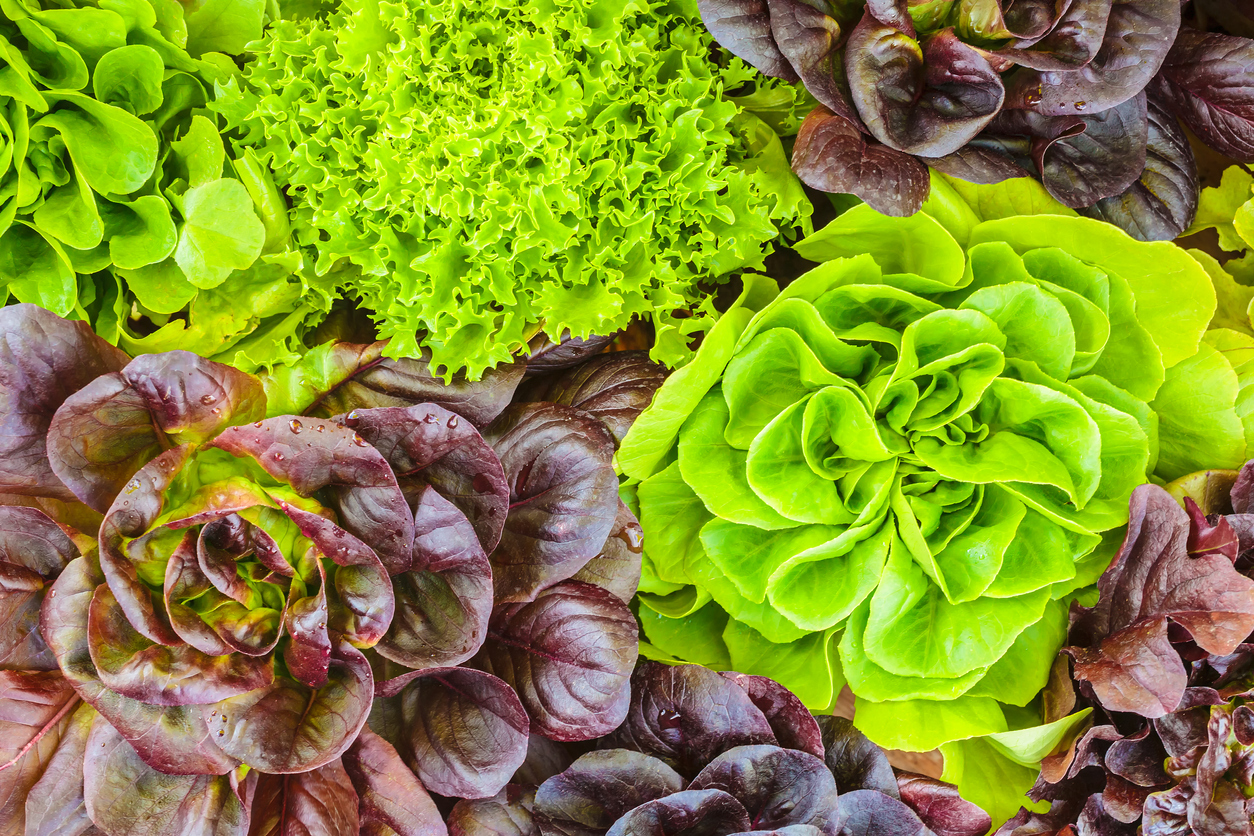
Lettuce likes cool weather, so you’ll likely be able to add green salads to your winter menu. If you’re doubtful about lettuce’s nutritional value thanks to childhood exposure to iceberg lettuce, rest assured that many lettuce varieties are chock-full of important nutrients. Depending on the type and leaf color, you can expect to find vitamins C and E, carotenoids and flavonoids, and folate in your salad greens. Lettuce’s rich array of health-promoting compounds are anti-inflammatory; consuming it may also help lower cholesterol, improve insulin sensitivity (a primary driver of type 2 diabetes), and reduce risk of cancer.
And hey, even iceberg lettuce contains fiber, beta carotene, and water. If you need further convincing to add lettuce to your diet, remember that the plant’s Latin name is the deliciously gothic Lactuca sativa — who wouldn’t want to try some of that to kick off a hearty winter meal?
Store lettuce in the crisper drawer of your fridge and use it within a few days of purchase. It’s not only good in salads, but also shredded in tacos and burritos, and as a topping in sandwiches and on plant-based burgers. You can use leaf varieties as wraps or “cups” for fillings and dips.
Winter Cabbage
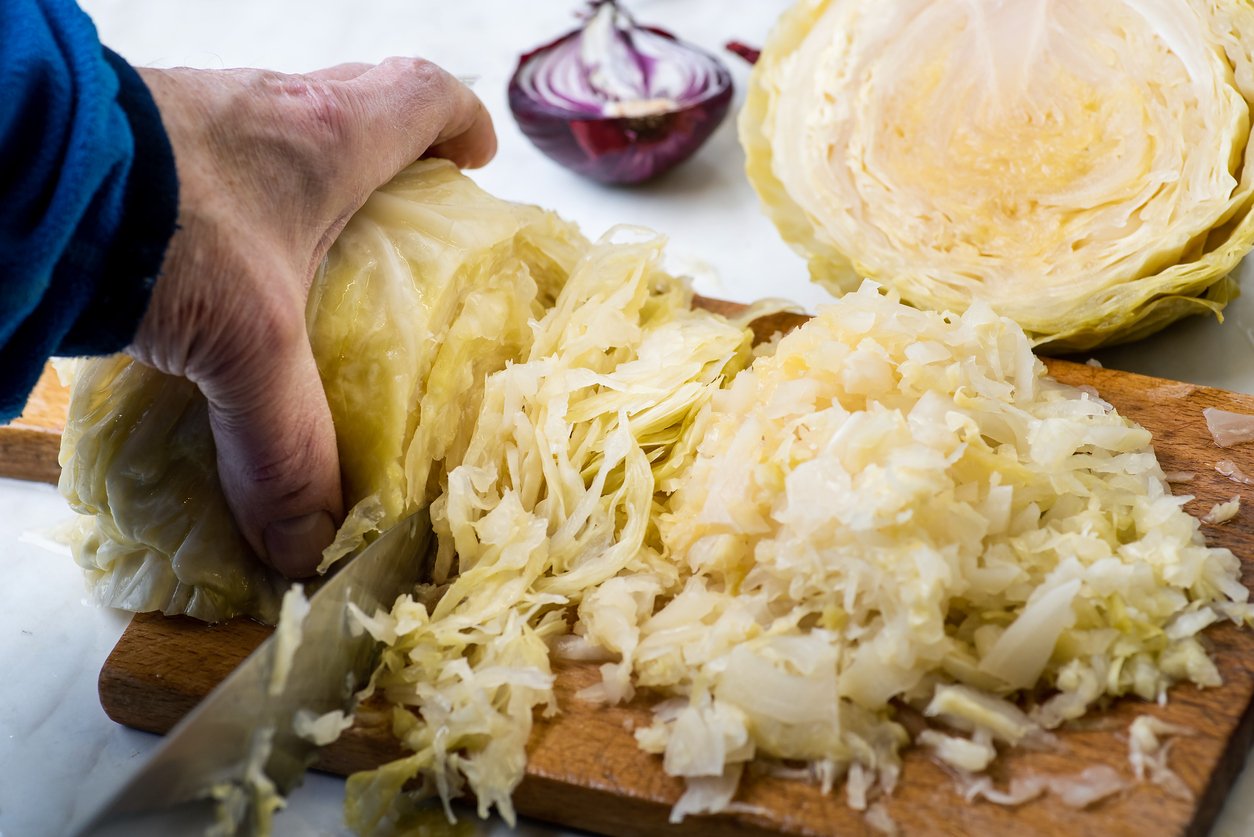
Winter cabbage is lettuce’s tough cousin. It can grow in very cold conditions, and once harvested in early winter, it’s happy to sit in a cool dark place until you’re ready to serve it. Winter cabbage is high in vitamins C and K1 as well as folate. And as a proud member of the cruciferous family, cabbage is also a great source of sulforaphane precursors. So equipped, cabbage may be protective against liver and cardiovascular disease, as well as cancer progression.
Cabbage lasts longer than other leafy greens. Neglect a head in the crisper drawer, and it should be perky and ready to eat even several weeks later (or simply peel away and compost the degraded outer leaves until you reach the crisp stuff again — not that I’m speaking from personal experience!). You can eat it raw or cooked. Raw cabbage is awesome when shredded in salad, coleslaw, and tacos, or fermented into sauerkraut or kimchi. Cooked, cabbage adds body and flavor to stir-fries, soups, and casseroles. Or give it costar billing in its own side dish, such as the British potato-and-cabbage classic known as “Bubble and Squeak.”
Peas
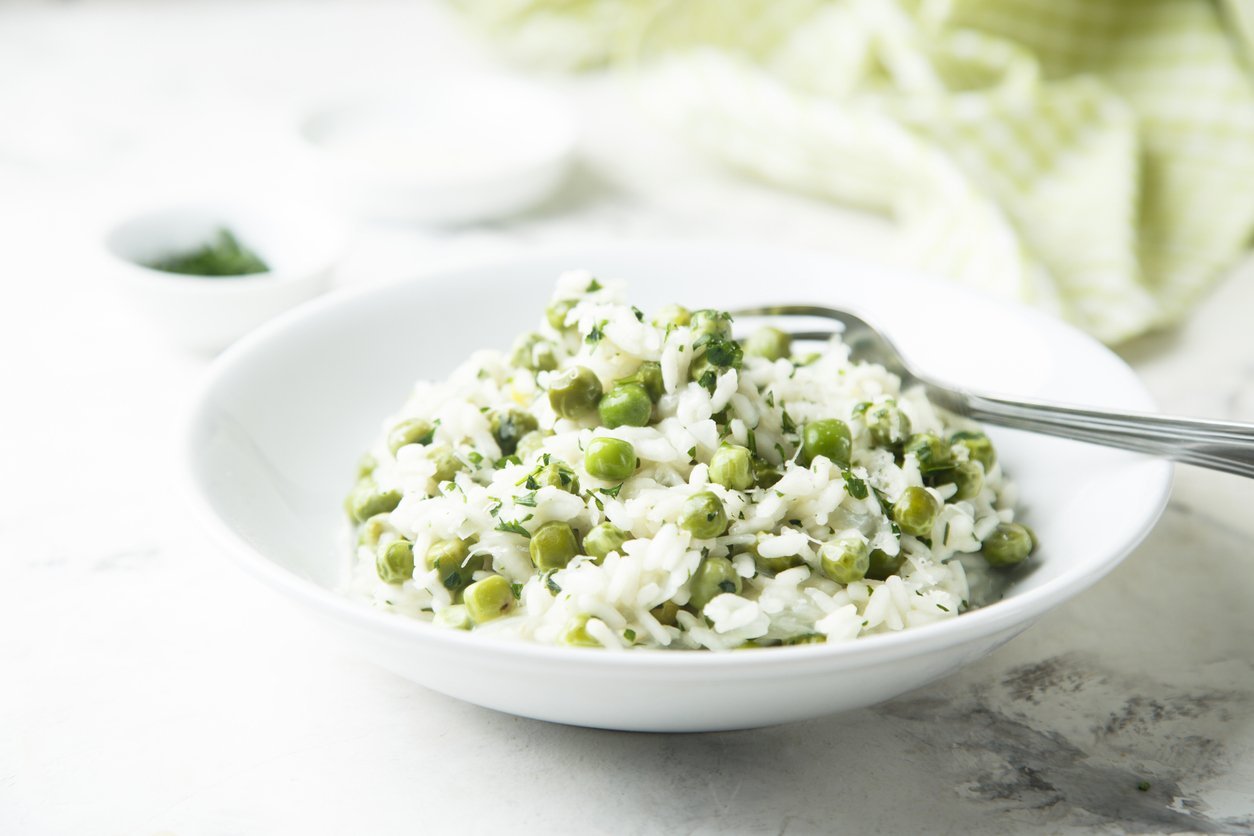
Peas can be the first garden food you plant and enjoy in the spring, and also a great winter crop in warmer climates (or greenhouses). Rich in copper, manganese, and phosphorus, as well as in B vitamins and in vitamins A, K1, and C, peas boast a host of health benefits. They’re anticancer and good for heart health and diabetes management. They can also help you build muscle (Popeye might have been squeezing the wrong can) and support a healthy gut microbiome.
Store fresh peas in your refrigerator’s crisper drawer for up to a few days. If you get them in the pod, either from a store or from your own winter garden, you can freeze them after shelling. Fresh or frozen peas are great as a side dish. (If you’ve never tried the British dish “mushy peas,” I predict you’ll either become a huge fan or a staunch foe). You can also blend them into dips, soups, and homemade veggie burgers, and add them to casseroles, pasta and rice dishes, and stir-fries.
Dark Leafy Greens
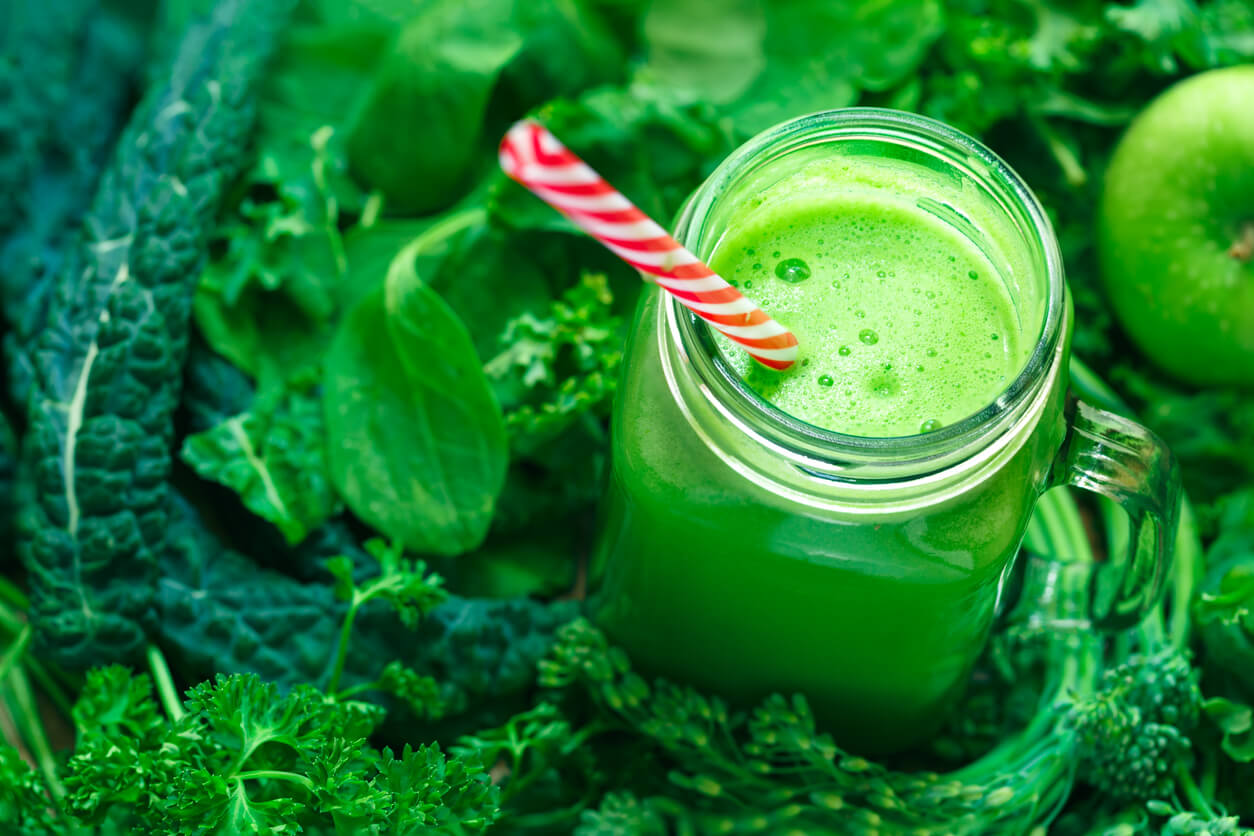
Dark leafy greens love it when the temperatures drop close to freezing (and in the case of collards, well below). If you’re a gardener, these greens are among the easiest crops to produce, partly because they grow in the off-season when most pests are hibernating or pupating or whatever they’re doing before they awaken and start chomping on your plants.
Many of the healthiest and heartiest greens belong to the cruciferous family. These include kale, collard greens, turnip greens, mustard greens, watercress, arugula, and more. Arguably some of the healthiest foods you can eat, dark leafy greens are typically high in vitamins A, C, K1, and folate, as well as fiber. Per calorie, they’re also rich sources of protein, as well as minerals such as calcium, magnesium, iron, and phosphorus. All these goodies, in addition to a pharmacopeia of antioxidants, render dark leafy greens powerful anticancer, neuroprotective, cardioprotective, blood-sugar-stabilizing foods.
Dark leafy greens will last at least a few days in your refrigerator. Maximize their life and freshness by storing them unwashed in produce bags or an airtight container. You can consume them raw, in salads, as wraps, or pureed in sauces, dips, or green smoothies. Cooked, they’re at home in pasta dishes, curries, stir-fries, soups, and stews. You can also dehydrate them into chips (kale is the most common one to use in this way), or simply steam the greens for a heart-healthy dish.
Brussels Sprouts
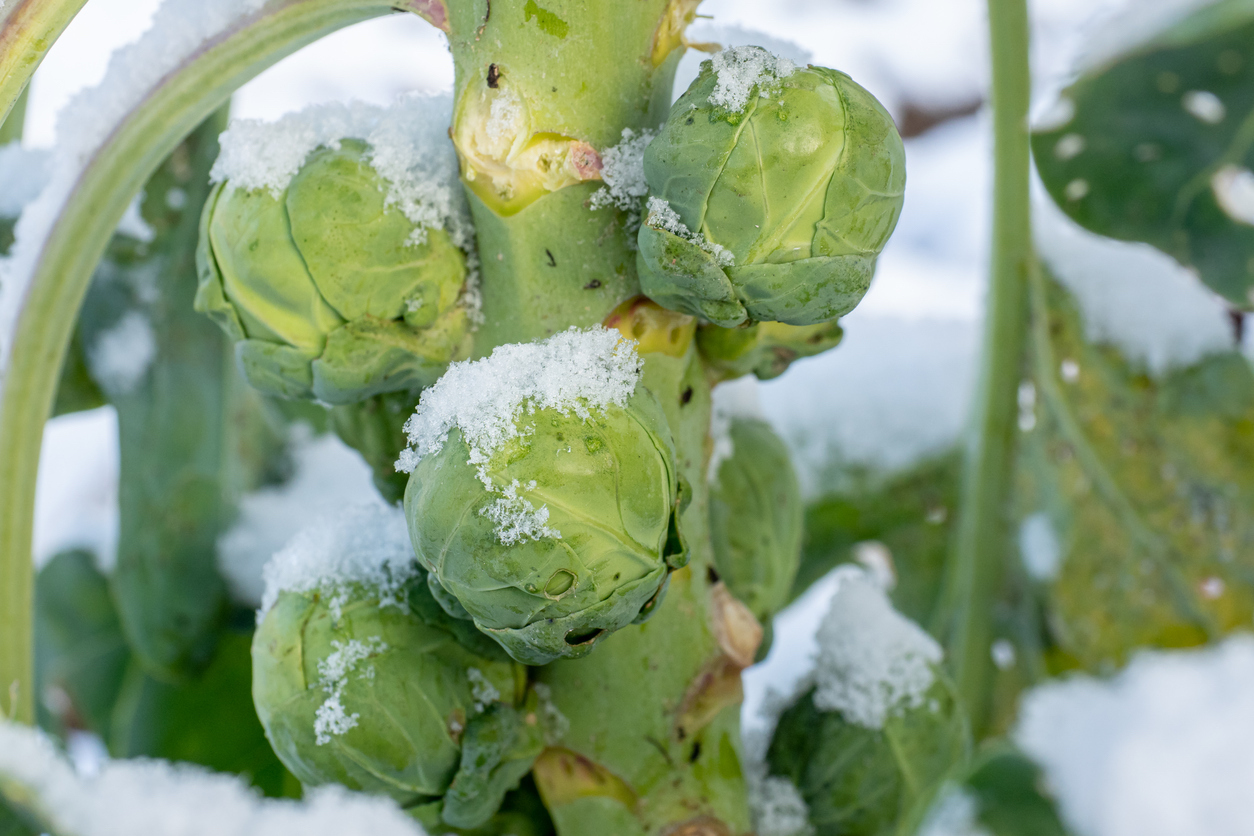
Brussels sprouts can defy winter in your garden, showing off their decorated stalks even when the ground is covered with snow. They’ve become something of an “it” vegetable, which is nice considering how they used to be maligned as something kids had to eat before they got dessert.
How good are Brussels sprouts for you? Let us count the ways. They’re high in potassium, vitamin C, vitamin B6, folate, vitamin A, and vitamin K1. They’re also a good source of iron, magnesium, phosphorus, and calcium, as well as sulforaphane and other antioxidants. Eat your Brussels sprouts because they’re delicious, and also reap their benefits for your heart and brain, as well as their anticancer and anti-inflammatory properties.
Brussels sprouts separated from their stalk will last for a week to 10 days in the refrigerator, and for about 2 weeks if you keep them in cold storage while still on the stalk. Loose sprouts do well in the freezer, where they can last for up to a year.
You can eat Brussels sprouts raw and shaved in coleslaw and over salad and pizza. Cooked, they make an excellent side dish, appetizer, or ingredient in grain bowls, stir-fries, and breakfast hashes. One thing I do not recommend is coating the sprouts with chocolate and nuts, and wrapping them in foil to disguise them as fancy hazelnut candy. (Yes, thanks to the Internet, it’s now a thing.)
Potatoes
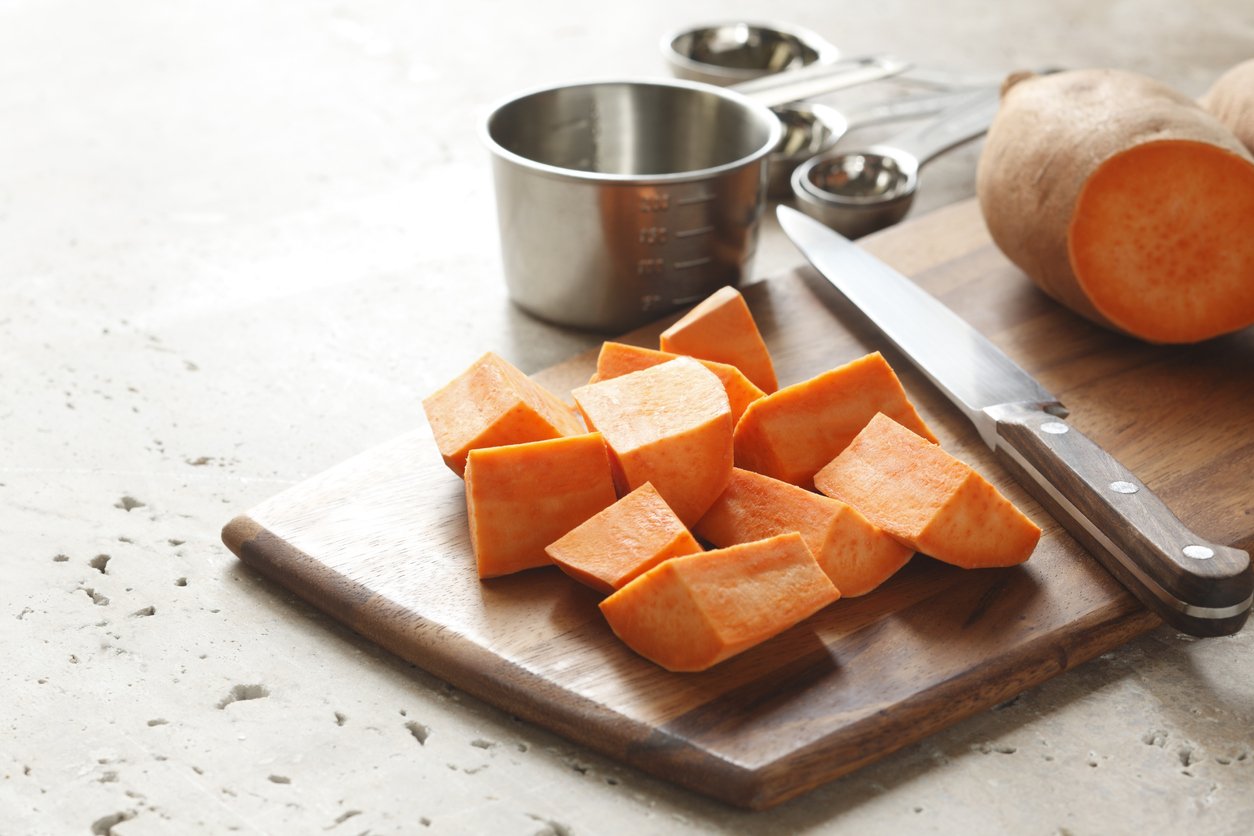
Potatoes are a prime example of winter produce and are cold storage superstars, remaining stable and fresh for months when stored in a cool dark place with sufficient humidity. Dark is important, as light turns them green and triggers the growth of shoots (called “eyes”), which can produce unhealthy compounds that also don’t taste very good. Potatoes, far from being “empty carbs,” are in fact among the healthiest of plants. They’re high in many nutrients, especially B vitamins, Vitamin C, potassium, manganese, magnesium, and phosphorus. Their sweet potato cousins (actually not really related at all, except for the name) are also rich in vitamin A precursors and other antioxidants, depending on their skin and flesh color.
Potatoes have been shown to help prevent the progression of cancer, their resistant starch helps with digestion and weight management, and their mineral content makes them good for bone and heart health.
You can store potatoes for a week or two on a kitchen counter (remember, they like it dark), or in cold storage. The classic farmhouse technique is to pack them in sand, being careful not to bruise the flesh. If you grow your own, scrape off most of the dirt but don’t wash them, and avoid storing any bruised or cut tubers (use these up first).
Don’t eat potatoes raw. Instead, prepare them in many wonderful ways — boiled, steamed, baked, grilled, roasted, air-fried, sautéed, mashed, smashed (yes, smashed), stuffed, in sheet pan meals, in soups and stews, chilis and curries (I think you can probably sing that last sentence to the tune of “My Favorite Things”). Breakfast potato hash, for example, can be a filling and comforting way to start your day.
Alliums
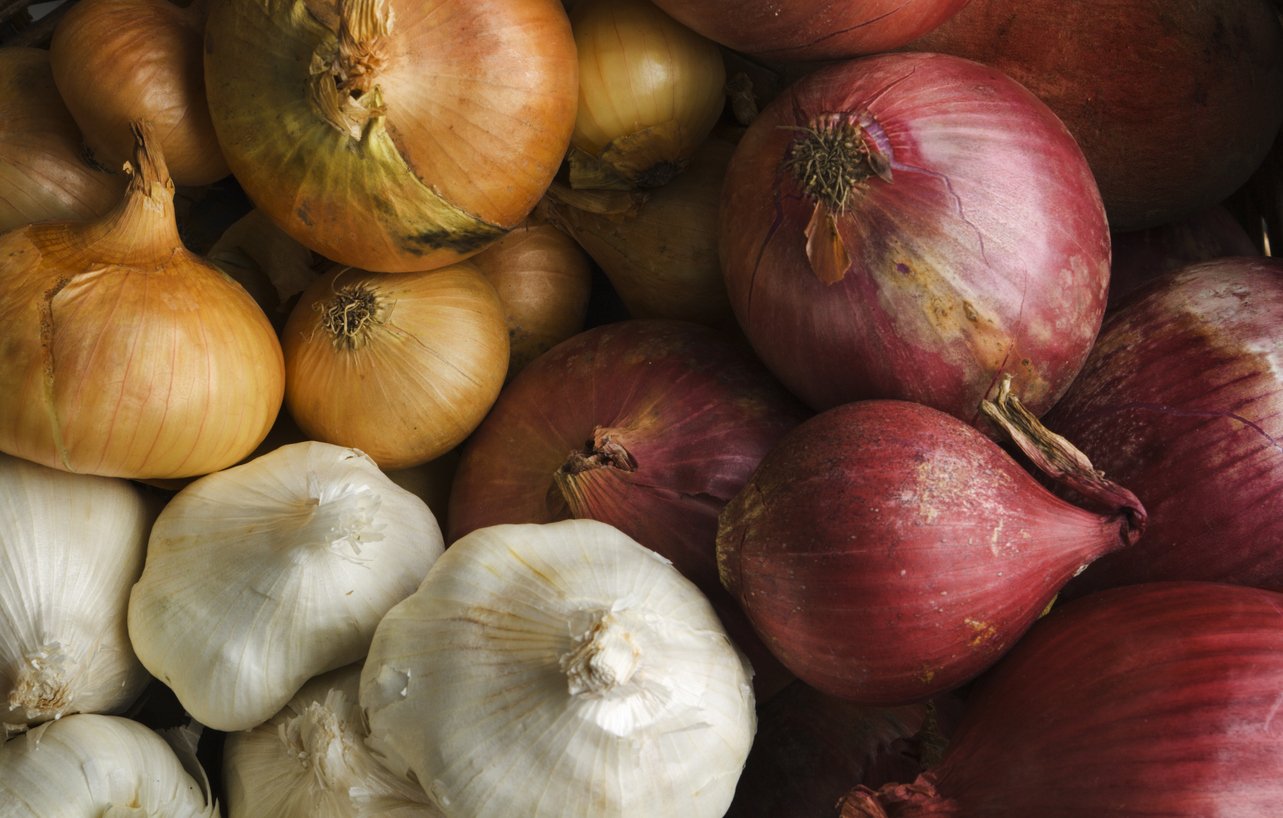
Members of the allium family, garlic and onions, are great year-round. As ground-dwellers, they can handle pretty cold temperatures, and certain varieties that get planted in the fall can remain in the soil until harvesting in winter. Both garlic and onions provide immense health benefits to most people. They’re rich in soluble fiber and antioxidants, as well as a variety of vitamins and minerals, including B vitamins, vitamin C, folate, potassium, selenium, and manganese.
Long prized as folk remedies and now with lots of scientific studies to back up their potent health-boosting properties, alliums display antioxidant, anti-inflammatory, antiviral, and antibacterial effects. They have also been shown to help prevent blood clots, regulate the immune system, and may even slow aging.
Both garlic and onions keep well on the kitchen counter; just use them before they start sprouting. For longer-term storage, that cool dark place is your best bet. Don’t store onions with potatoes, because onions give off ethylene gas that gets potatoes sprouting.
Garlic and onions can flavor just about any savory dish. You can use them raw in salads, dips, and dressings, or cooked in soups, casseroles, grain bowls, stir-fries, pasta dishes, and as pizza toppings.
Beets
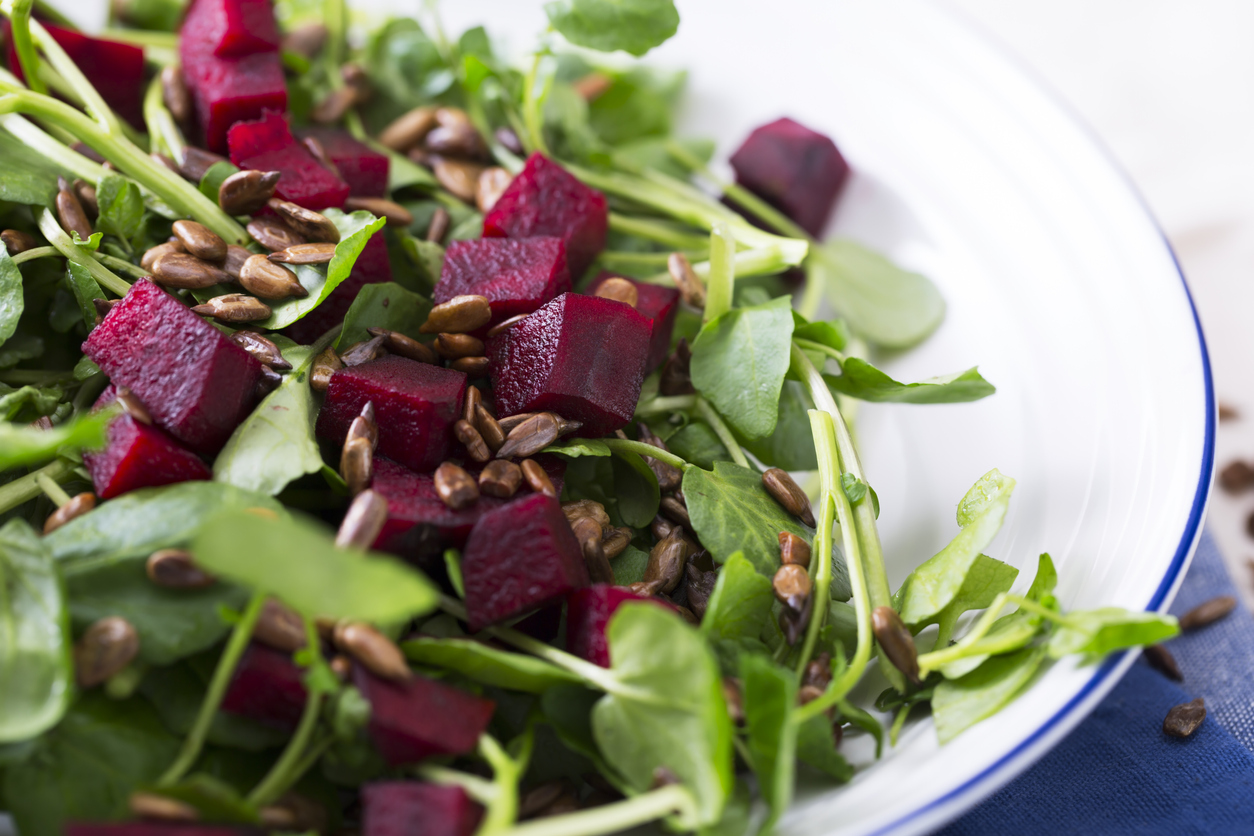
Beets are a great leave-’em-in-the-ground winter crop, largely because of all their sugar, which acts as a potent antifreeze for the beets and makes them taste delicious to us. High in vitamins A, C, K1, and B2 as well as folate, manganese, and copper, beets also deliver huge health benefits. They’re good for the heart, support athletic performance, reduce inflammation, support digestion, and promote brain health, cancer prevention, a balanced immune system, and healthy eyes and liver.
Although they’re so tasty you might want to consume them right away, beets are very comfortable in the fridge, where they can last for months. In ideal cold storage conditions, they might go up to a year and still taste great when eaten raw or cooked. Pickling and fermenting beets are other ways to make them last.
Beets go well raw in cold soups, salads, smoothies, and dips. You can also roast them with other root vegetables in a sheet pan meal, and slice or cube cooked beets into grain bowls and other hot dishes.
Turnips
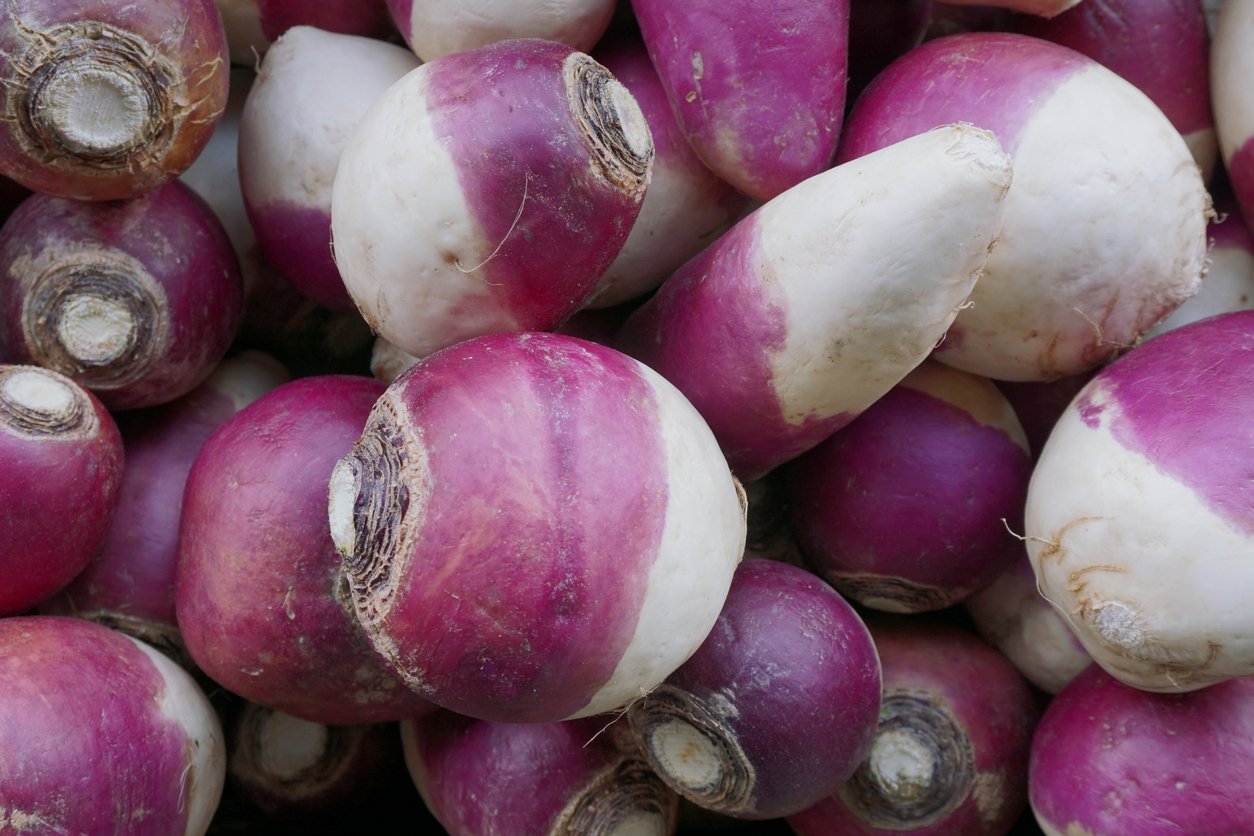
If you’re a fan of Russian folk tales, you may recall the story of the gigantic turnip that required the entire community to work together to pull it out of the ground. Pro gardening tip: if you harvest your turnips before the ground freezes, they’ll come out pretty easily. And once you’ve extracted the root, it can last long into the winter if you store it well.
Turnips are high in fiber, vitamin C, potassium, and various antioxidants, including the phenolic compound kaempferol 3-O-sophoroside-7-O-glucoside, which I tell you only because typing all that felt like a worthwhile challenge. Thanks to that and other compounds, turnips are anticarcinogenic, antimicrobial, stabilizing of blood sugar, and protective of the kidneys.
Store turnips in the fridge or in cold storage — like beets, they can last for months under the right conditions. You can consume them raw in salads and dips; fermented; or baked, stir-fried, roasted, boiled, mashed, or to flavor and provide body for soups and stews.
Broccoli
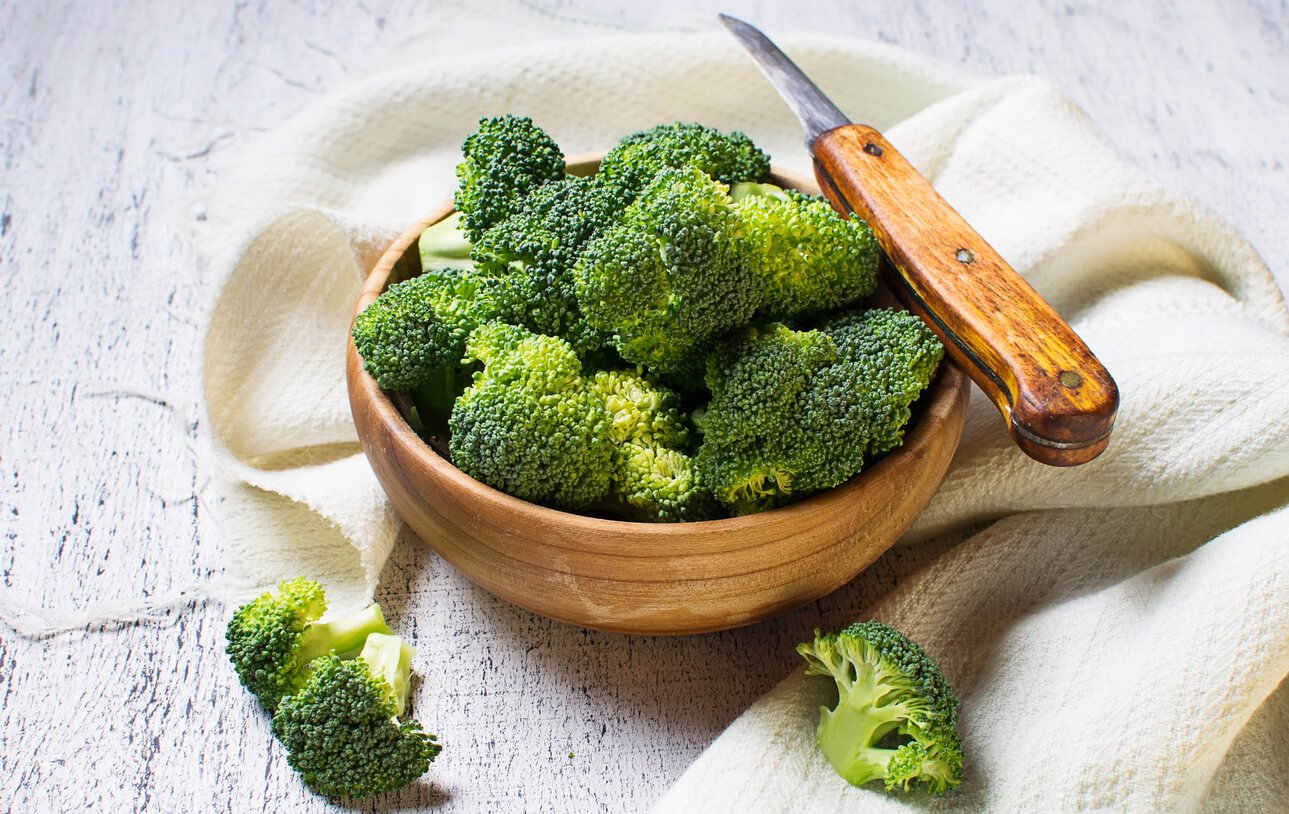
Broccoli reaches maximum flavor and nutrition when planted in fall and harvested in late fall (or, in warmer climates, early winter). Broccoli is high in sulforaphane precursors (sulforaphane is one of the most potent anticancer compounds ever studied) and other antioxidants, as well as micronutrients including phosphorus, potassium, vitamin C, folate, and vitamin K1. In addition to its cancer-fighting ability, broccoli is also antimicrobial, helps build strong bones, and supports the immune system, brain, and heart.
Because it’s more of a fall-harvest vegetable, you can enjoy it during the winter by cutting it into florets and then freezing them. Stored in an airtight container or baggy, the florets can keep for 6–8 months. Try to eat at least some of your broccoli raw, as that’s the way it provides the most sulforaphane precursors. Raw broccoli goes well in salads, cold soups, blended into dips and sauces, or as crudité. Cooked, broccoli stars in stir-fries, pasta dishes, soups, casseroles, and veggie sides. Pro tip: add a little mustard powder to cooked broccoli to fully activate the sulforaphane.
How to Eat Winter Vegetables in Season
If you’d like to give seasonal eating a try, you can start with just a couple of winter vegetables, or go deeper and see how far you can get on a locavore diet. Depending on where you are in the world, one of the following seasonal food guides will help you on this path:
- Seasonal Food Guide — US & Australia
- Eat the Seasons — North America & UK
- Sobey’s Canadian Produce Guides — Ontario, Western Provinces, Atlantic Provinces
- Farm Africa
- EUFIC — EU countries
- PROFECO — Mexico
Winter Vegetable Recipes
Maximize the nutrition and flavor of your meals by using in-season, winter produce ingredients, and perhaps even some of your own homegrown veggies! Creating nourishing and satisfying plant-based dishes using vegetables grown with the season can be a lovely way to keep you warm and comforted — no matter how cold it gets.
1. Supergreen Mushroom and Potato Soup
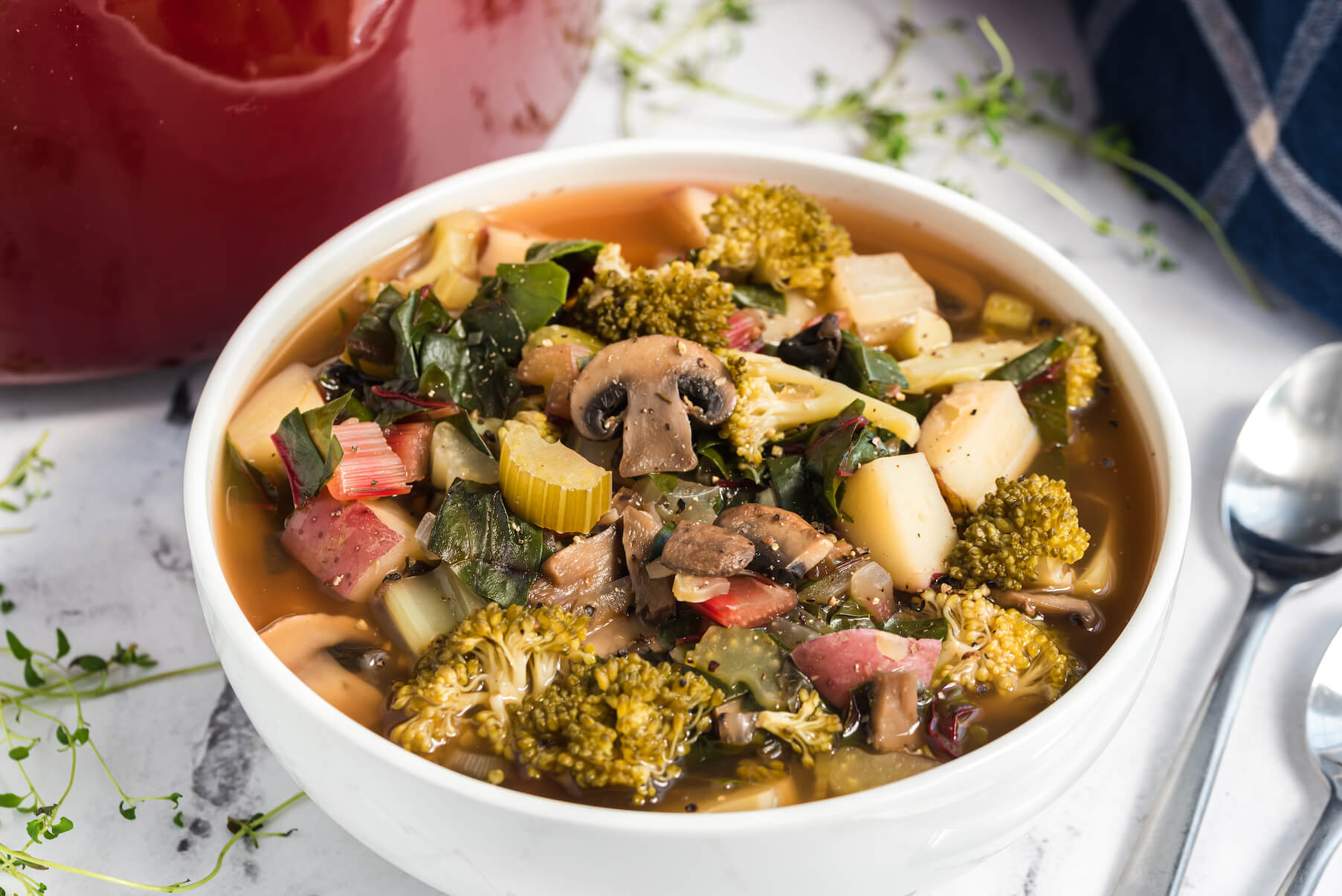
Supergreen Mushroom and Potato Soup has not one, not two, not three, but five winter vegetable superstars! Each one — broccoli, Swiss chard, potatoes, garlic, and onion — is packed with nutrition and flavor, making this one of the best soups to keep you warm, happy, and nourished.
2. Crunchy Kale Slaw
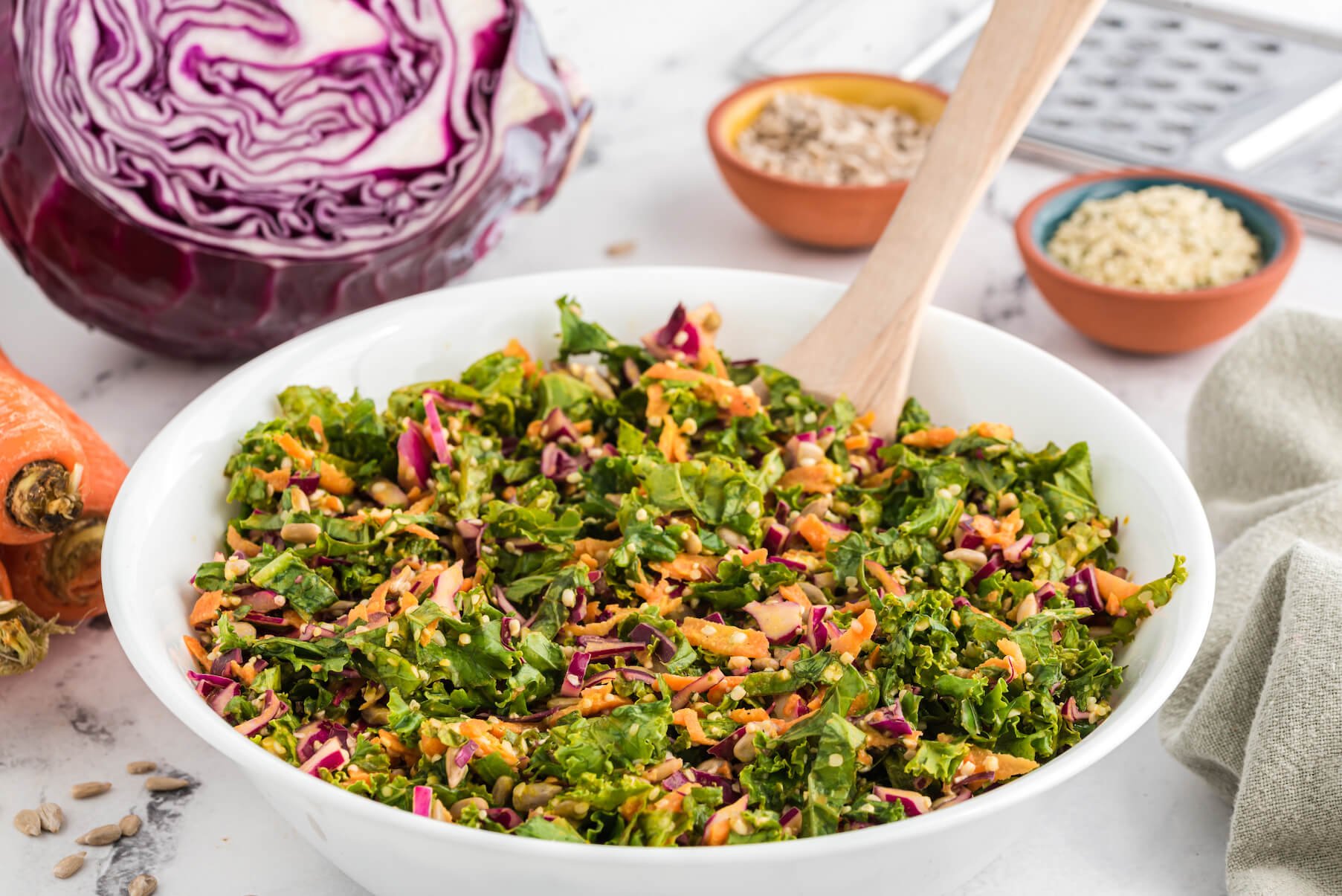
Carrots, kale, and cabbage make up this Crunchy Kale Slaw (talk about alliteration!). It requires no cooking, just a little shredding (which may be therapeutic for some!) — making this dish one that gives back tons of nutrition in exchange for very little preparation effort. Enjoy it solo, as a side dish, or on top of tacos and wraps.
3. Quinoa, Lentil, and Mushroom-Stuffed Acorn Squash
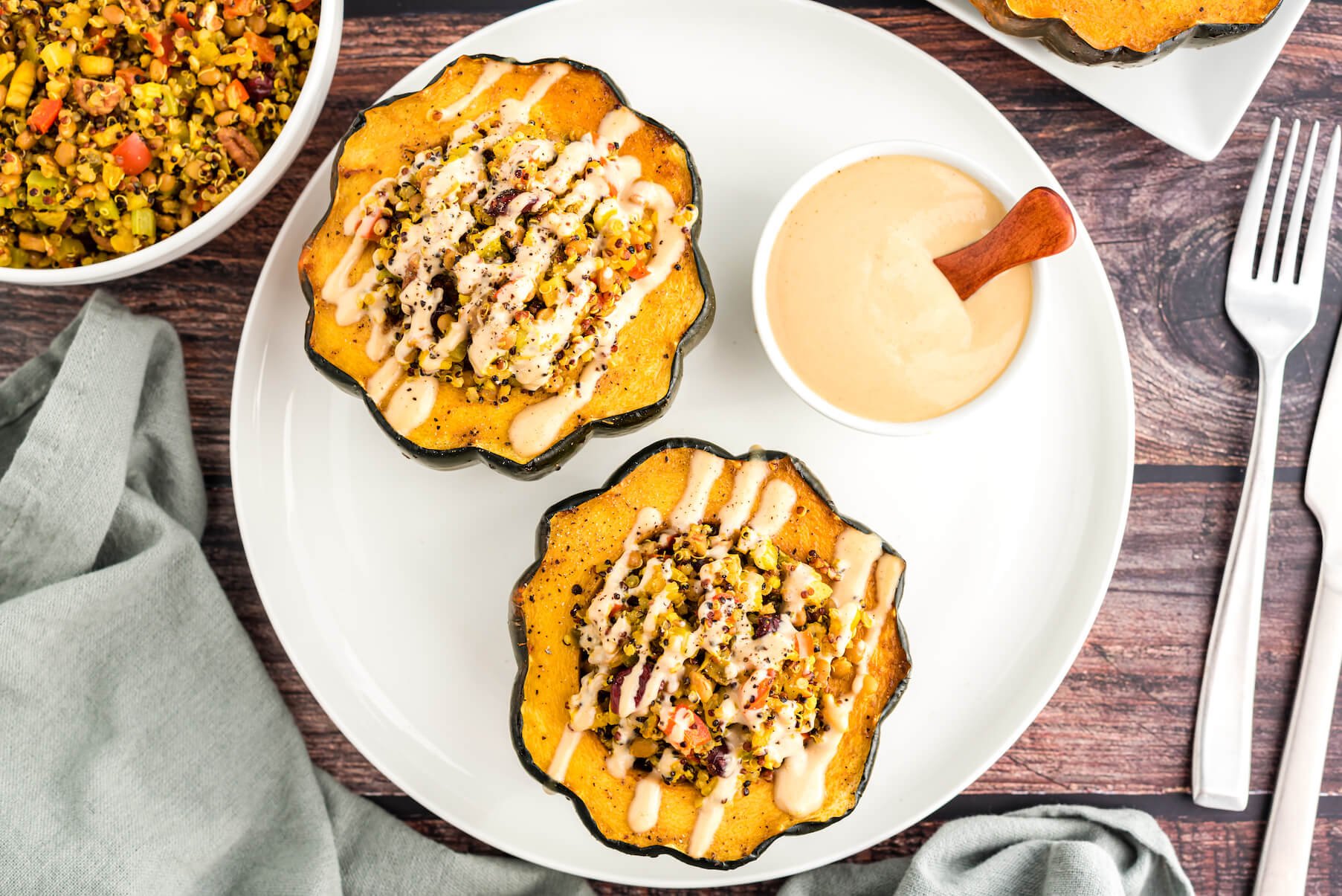
As you’re making and enjoying this fiber-filled and nutrient-dense winter vegetable recipe, you’ll likely notice the warm and comforting aromas and flavors that embody the winter season. And, if you’re tending to a winter garden, you may have three of the ingredients — garlic, onion, and acorn or butternut squash — on hand. Quinoa, Lentil, and Mushroom-Stuffed Acorn Squash is packed with protein, carotenoids, and vitamin C — nutrients to help support your health during the winter months.
4. Beet Burger with Smashed Avocado and Pickled Red Onion
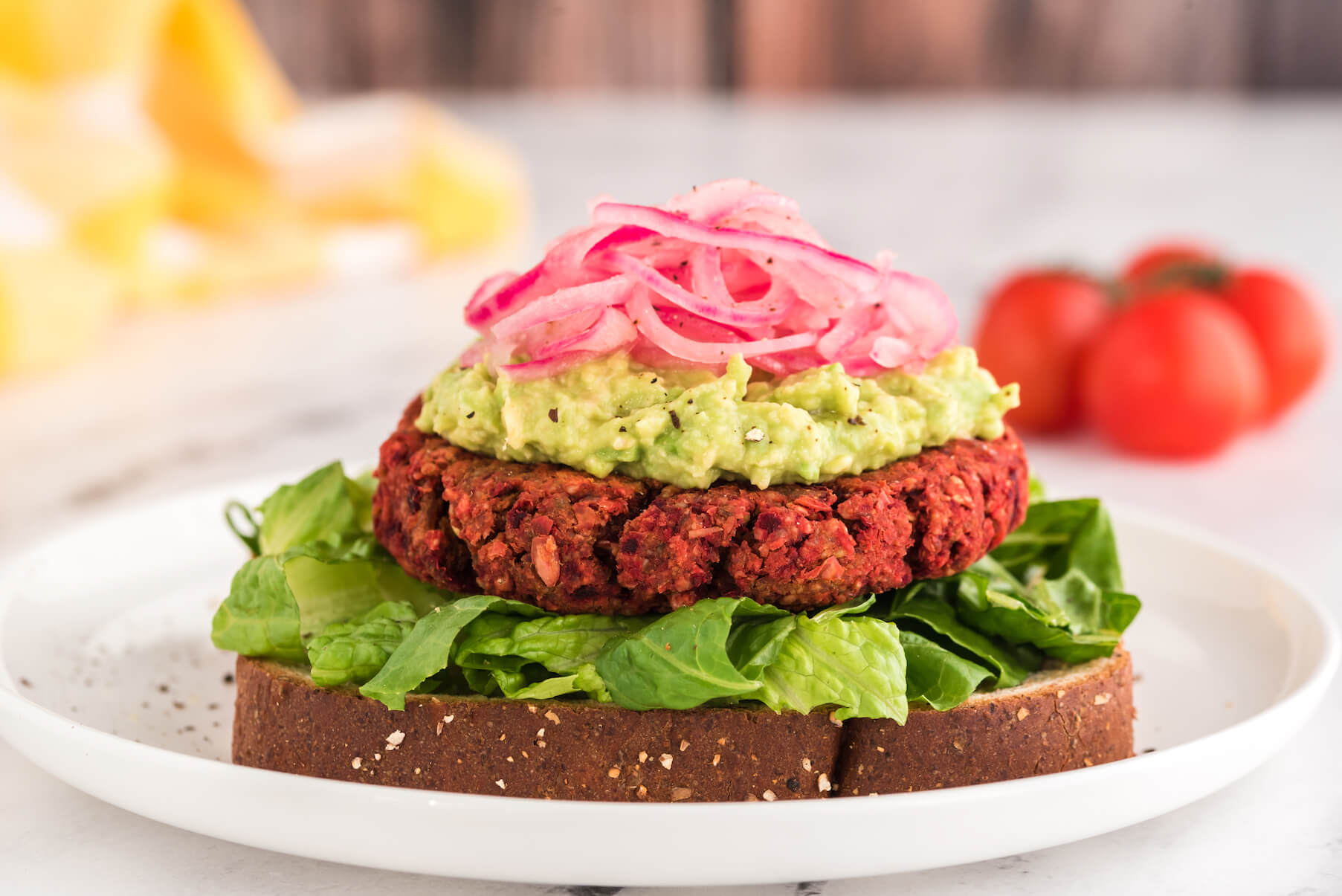
This burger is simple and delicious! Beets are rich in natural compounds called nitrates, which are converted to nitric oxide, a compound that dilates blood vessels and increases blood flow. This can lower blood pressure and support heart health. Top the burgers with avocado (which are a winter veggie in some parts of the world!) and pickled red onions (another winter veggie!) to make this a meal high in nutrients like vitamins C, E, and K, as well.
5. Drunken Broccoli in Thai Almond Sauce

Garlic, green onions, and broccoli are the winter veggie stars of this simple and scrumptious side. (The other star being almonds which store well — although, unless you live in California, Spain, or Italy, you’re probably not growing almond trees in your backyard.) Broccoli has vitamin C, zinc, and iron, which help support your immune system. Garlic and onion have prebiotic fiber, which supports gut health. How cool that such a simple dish can offer so much, helping our bodies function at their best!
Winter Veggies Are Cool!
Just because the days are short and gardens are resting doesn’t mean you have to wave goodbye to fresh veggies. Winter is a great time to eat the more hearty vegetables. Some are actually in season, while others just store well in cooler temperatures. We’ve looked at a number of highly nutritious foods that can satisfy your taste buds, fill you up, and support your health. Create delicious and satisfying winter meals by mixing and matching while you wait for the first shoots of spring. That way, the next time you hear, “Winter is coming,” you’ll think “Yum!”






















































